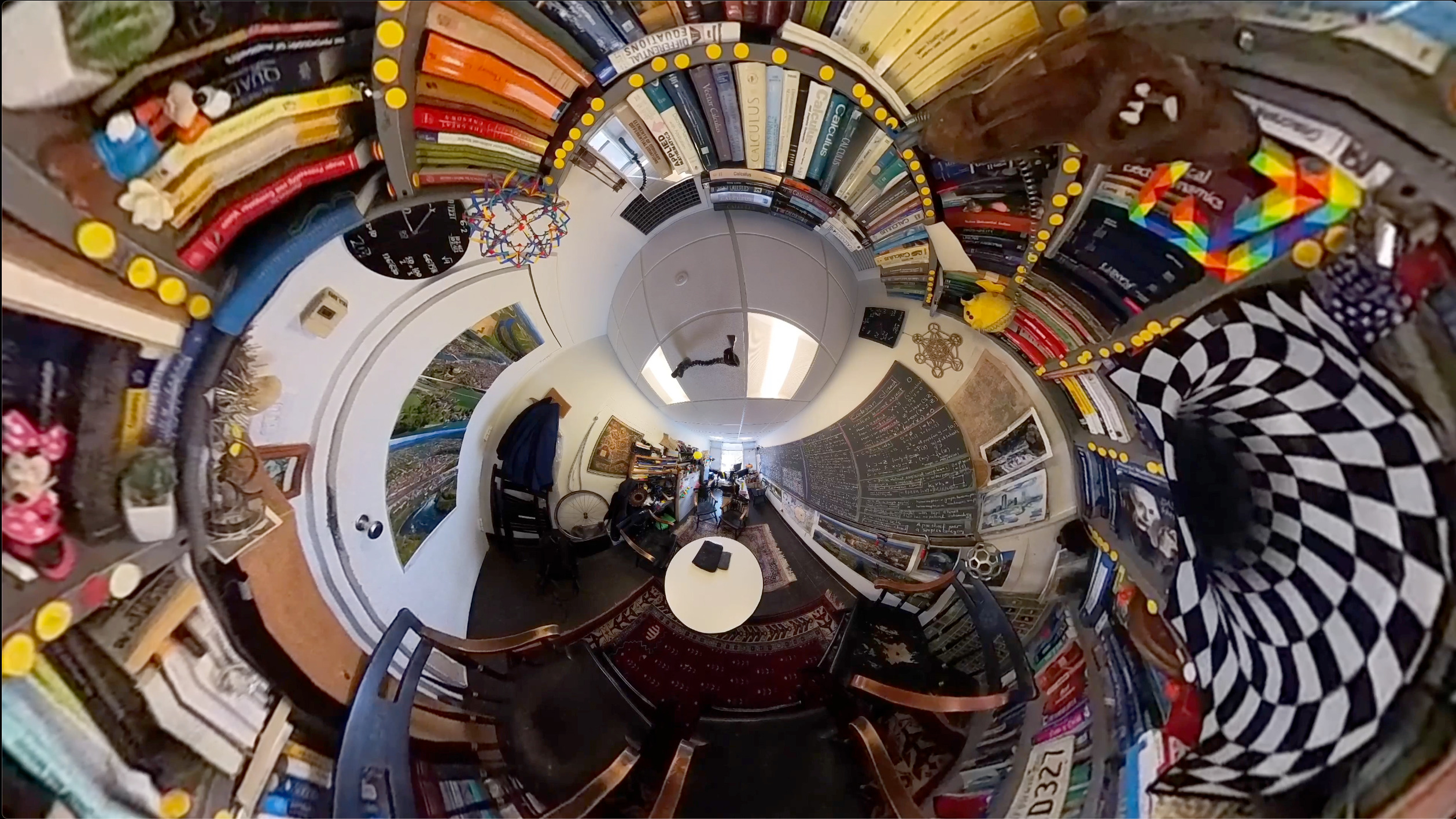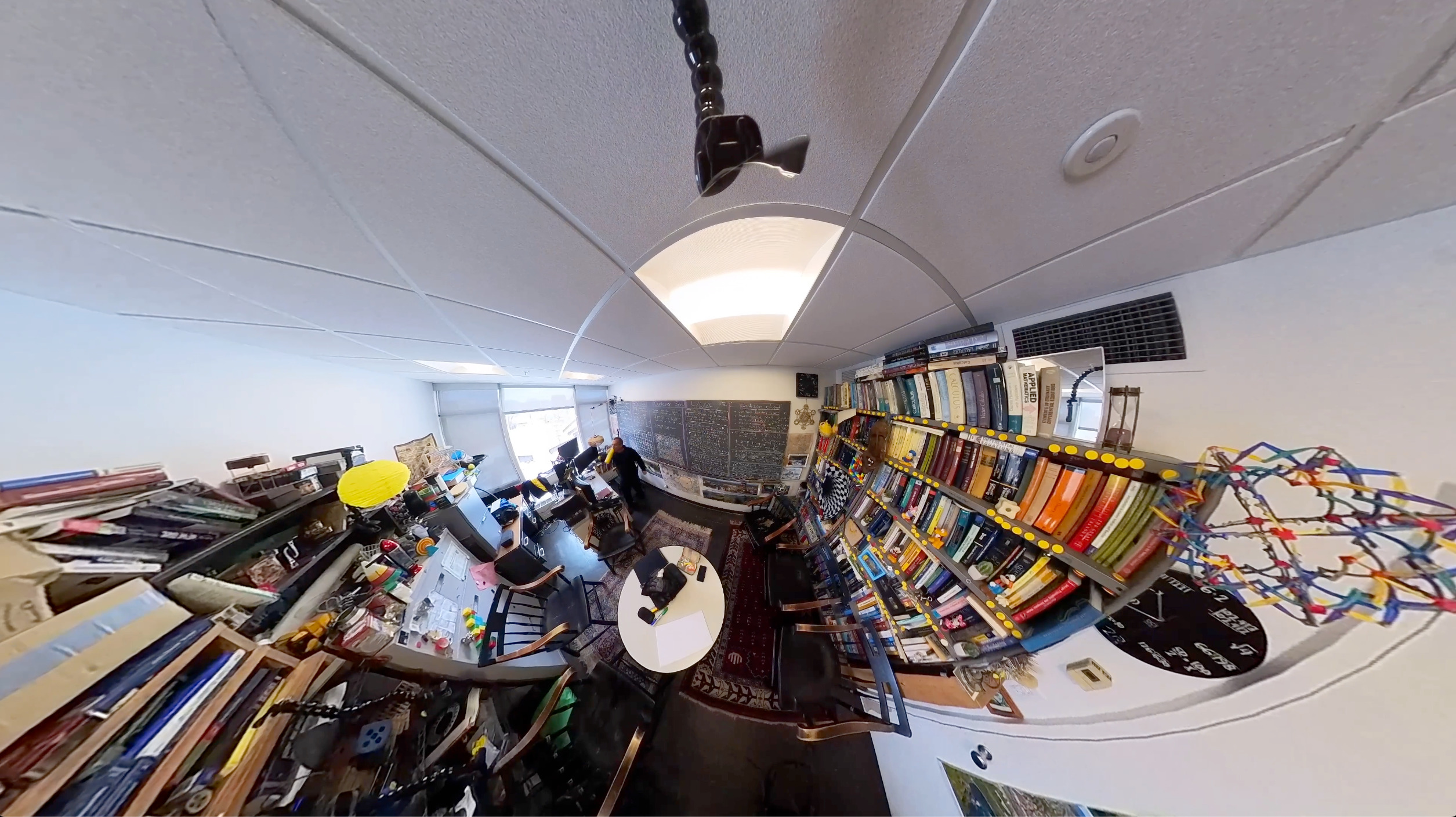The discrete Sard theorem in the simplest case (which I obtained in 2015) that a function from a discrete d-manifold to {-1,1} has level sets that are (d-1) manifolds or empty. (See here for the latest higher generalization to higher codimension.) A simplicial complex is a d-manifold if every unit sphere is a (d-1)-sphere. d-spheres are d-manifolds which have the property that removing a point produces a contractible complex. When taking the Cartesian product of two simplicial complexes, one does not have a simplicial complex yet in general. Example: the Cartesian product of {{1,2},{1},{2}} with itself is {({1,2},{1,2}),({1,2},{1}),({1,2},{2}),({1},{1,2}),({1},{1}),({1},{2}),({2},{1,2}),({2},{1}),({2},{2})}, structure with 9 elements but which can not be written as a finite set of sets closed under the operation of taking finite non-empty subsets. One can either enhance it by taking the Barycentric refinement, in which all pairs (x,y) form the vertices and where two pairs (x,y) and (a,b) are connected if either ,
or then
and
. In the example before, we would get a simplicial complex with 9 vertices, 16 edges and 8 triangles. [Taking this “multiplication” is the Stanley Raisner multiplication done algebraically. Write G=t+s+ts and take the product with u+v+uv to get s u + t u + s t u + s v + t v + s t v + s u v + t u v + s t u v.] In the talk I explain this in the case of
, a discrete circle. Since this circle has 16 simplices, the Barycentric refinement of the product has 16*16=256 points. The simplicial complex itself has 256 vertices, 768 edges and 512 triangles. The Dirac matrix of this 2-torus already is a
matrix. It takes already quite a while to compute the Betti vector
. The Kuenneth formula tells that the Poincare polynomial of the torus
is the product of the Poincare polynomials of the factors
(the circle has Betti vectors (1,1)) . Now, as a delta set, the product has f-vector (64,128,64). The computations are faster there. It might not look as much but when working with actual implementations of larger dimensional manifolds, the reduction often is crucial as there is an obvious limit on how large the matrices can be which one can handle.
In order to have a Sard theorem for delta sets, we first need to tell what a d-manifold is within the category of delta sets. Of course, it must be the same definition: it is a delta set for which every unit sphere is a (d-1) manifold. What a unit sphere is should be clear too: two points in the delta set are connected if one is contained in the other, where “contain” is understood in the sense that there is a sequence of face maps which gets from one to the other. Face maps are part of the definition in delta sets. The sets obtained by the discrete are already delta sets but the translation is trivial: just shift the dimension of the objects. The edges are the new “points”. One can see that in the picture to the middle, where I drew the level set of a function (which is a collection of closed yellow curves). The success from last winter to write the level sets directly in the delta sets without looking at the Barycentric refinenment asks the question, whether we can directly have a Sard result for delta sets (like Cartesian product). The answer is yes, but the proof shows that there is a catch. We need to make sure that the level set in each boundary sphere of a cell is a codimension 1 sphere. This is obvious for simplices where a level set is always a hyper-sphere. Take a 2-simplex for example (a triangle) and a function on the vertices. If not all 3 points have the same value, then one of them must have one value (say 1), the other two must have the other value (like -1). now there are 2 boundary simplices (two edges) on which the function changes sign. we see that the level set is a 0-sphere. If we look at a tetrahedron, then the function partitions the vertex set into a 2-2 pair or a 1-3 pair. In the first case the level set is a cyclic complex with 4 elements, in the second case, the level set is a cyclic complex with 6 elements (3 edges and 3 triangles have the property that the function changes sign). The proof of the Sard theorem then boiled down to hyperbololicity and induction.
If we work on a delta set, we can have cells which have larger spheres. In the example explained in the talk, we have square cells (mathematicians can treat this product complex as CW complexes but I personally do not like this structure much, because the data structure is harder to describe due to its recursive nature: for CW complexes, we are able to attach k-cells to embedded (k-1)-spheres but that depends on the history of the build-up. When building up a simplicial complex as a CW complex for example we have to build it up starting up with the vertices, then build the edges, then the triangles etc. We can not just start with a triangle as there is no 1-sphere alive yet to which we can attach it. Delta sets do not have this disadvantage. The data structure describing a delta set is only slitghtly more complicated that the data structure for a simplicial complex. For the later we can build the Dirac operator as well as the dimension function automatically. For a general delta set, we have to give that. The advantage of working with the triple (G,D,r), where G is the set of sets, D is the Dirac operator encoding the face maps and r is the dimension function, we can usually work with much smaller objects.
Coming back to the spheres of the largest cells, the level sets in that sphere can already be more complicated. If we have a square and diagonal vertices are colored differently, then the level set in the unit sphere (cyclic graph of 4 elements) consists of all the 4 edges, meaning that we have 2 zero-dimensional spheres there. In some sense we have a “hyperbolic point” or “singularity”. One can see that in the picture to the left in the upper left corner. We had to make a choice how we build the 0-spheres in order to decide where the level curve passes. What it means however is that the level set is not locally injective. It is not locally given by a graph of a function (which in the continuum means that we have a singular point, a point where the gradient is zero). This problem does not occur if we model sets { y = f(x) } where f is a map from a k-manifold to a l-manifold. It also does not occur we if model manifolds which are locally given as graphs of functions (using the implicit function theorem). But the problem can occur in principle. A literal generalization of Sard to delta set is wrong. But
Theorem: if f is a function on a delta set that is a d-manifold and {f=c} on each cell x in the delta set is either a sphere or empty, then {f=c} in the delta set is either a (d-1) manifold or empty.

















